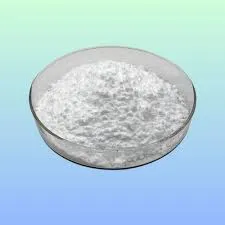
नोव्हेंबर . 18, 2024 12:00 Back to list
Understanding the Role of Hydroxypropyl Methyl Cellulose in Dietary Supplements
The Role of Hydroxypropyl Methyl Cellulose in Supplements
Hydroxypropyl methyl cellulose (HPMC) is a versatile compound that has gained prominence in the health supplement industry for its unique properties and functionality. As a semi-synthetic polymer derived from cellulose, HPMC is widely used as a thickening agent, emulsifier, and stabilizer in various formulations. Its ability to improve the texture and consistency of products makes it a popular choice among manufacturers.
One of the primary reasons HPMC is favored in supplements is its effectiveness as a binding agent. In the production of tablets and capsules, HPMC acts to hold the active ingredients together, ensuring that the supplements maintain their integrity until consumed. This is crucial for ensuring proper dosage and efficacy, as it helps prevent the ingredients from separating or breaking down before they reach the consumer.
The Role of Hydroxypropyl Methyl Cellulose in Supplements
Another significant advantage of HPMC is its soluble nature, which allows it to dissolve readily in water. This solubility can enhance the bioavailability of certain nutrients, ensuring that they are absorbed more efficiently by the body. In formulations where water-soluble vitamins or herbal extracts are involved, HPMC can facilitate better dispersion and uniform distribution of these ingredients. This attribute not only maximizes the effectiveness of the supplement but also improves the overall consumer experience.
hydroxypropyl methyl cellulose in supplements

However, the use of HPMC is not limited to its functional properties. It is also recognized for its safety profile. As a non-toxic and non-allergenic substance, HPMC has been classified by regulatory authorities as safe for consumption. This assurance of safety is paramount for consumers who are increasingly vigilant about what they ingest, making supplements with HPMC more appealing.
The versatility of HPMC extends to various types of supplements, including weight loss products, dietary fibers, and even protein powders. In weight management formulations, HPMC can contribute to a feeling of fullness, as it absorbs water and expands in the stomach. This property can aid in reducing appetite, thereby supporting weight loss efforts. Furthermore, HPMC is often included in fiber supplements, acting as a soluble fiber that supports digestive health and regularity.
Moreover, innovation in supplement formulations continues to integrate HPMC due to its unique characteristics. The pharmaceutical and nutraceutical industries are constantly exploring new ways to utilize HPMC to enhance the efficacy and appeal of their products. Research continues to reveal more about the potential applications of HPMC, particularly in combination with emerging nutrients and supplements.
In conclusion, hydroxypropyl methyl cellulose has established itself as a vital component in the supplement industry, offering numerous benefits from binding and film-forming properties to enhanced solubility and safety. As consumer preferences shift towards vegan options and transparent ingredient choices, HPMC is likely to play an increasingly significant role in the formulation of health supplements. With its versatile properties and positive safety profile, HPMC stands as an essential ingredient that meets the demands of modern consumers and manufacturers alike. Whether you're a manufacturer or a health-conscious individual, understanding the value of HPMC can enhance your approach to supplements and their consumption.
-
Versatile Hpmc Uses in Different Industries
NewsJun.19,2025
-
Redispersible Powder's Role in Enhancing Durability of Construction Products
NewsJun.19,2025
-
Hydroxyethyl Cellulose Applications Driving Green Industrial Processes
NewsJun.19,2025
-
Exploring Different Redispersible Polymer Powder
NewsJun.19,2025
-
Choosing the Right Mortar Bonding Agent
NewsJun.19,2025
-
Applications and Significance of China Hpmc in Modern Industries
NewsJun.19,2025







